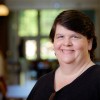This article is more than 5 years old.
On November 3-5 I attended an online class on rare book cataloging offered by Midwest Collaborative for Library Services. The class was taught by Patrick Olson, rare books cataloger from Michigan State University. Megan Mulder also joined me as well as Steve Kelly, Carolyn McCallum, and Leslie McCall from resource services. I won’t go into detail about how rare book cataloging is different than general cataloging, but suffice it to say that in rare book cataloging, the more specific the better. We tend to put more information in records and the class did a great job of breaking down the type of information we need to include. Signatures, bookplates, printing mistakes in the text, binding differences, editions, and handwritten notes in the margins are all things we like to include in records. Patrick covered how and what to include in the record such as the MARC fields to include, for instance 246, 500s, 655, 700s are the most added fields for rare books. He also covered the reasons to create a new record, or when you can use one already created and then just add on information that relates to your copy. Also covered was the differences in format, signatures (the small letters and numbers at the bottom of some pages in a copy), and the use of RBMS controlled vocabularies and relationship designators. While I have learned many things about rare book cataloging just by doing the work and asking questions of Megan, this class cleared up some questions I have had about what information to include and where it needs to go in the record. All in all this was a great class and I learned a lot more about why rare book catalogers do what we do and why it needs to be done.

3 Comments on ‘Rare book cataloging class’
Glad to hear this was such a valuable class!
It’s interesting how, with rare books, the interest in the artifact is primary, not the actual content of the work. Thanks for sharing your insight!
Huzzah! Rare book cataloging is tough, glad this could answer some outstanding questions about all the intricacies.